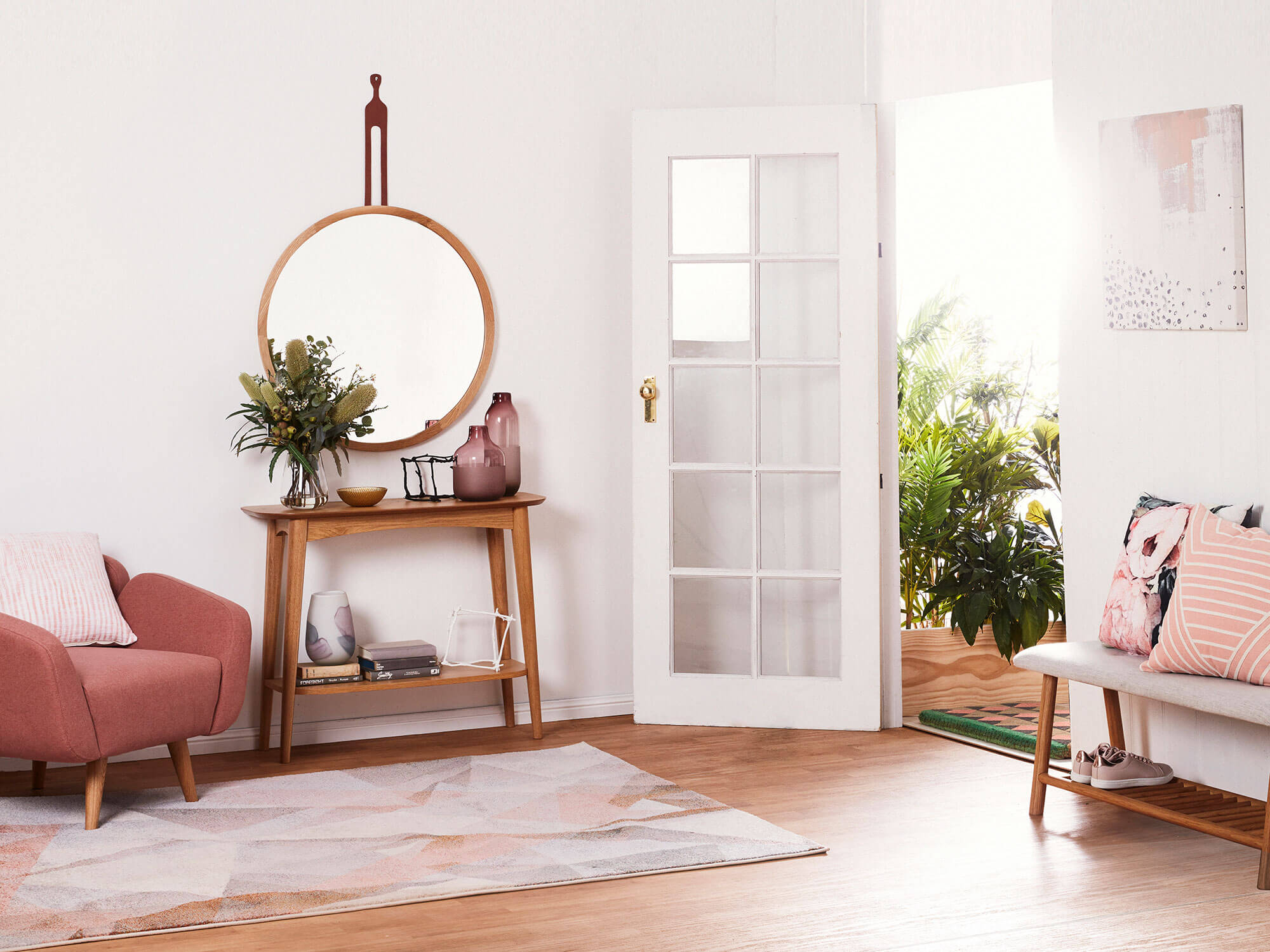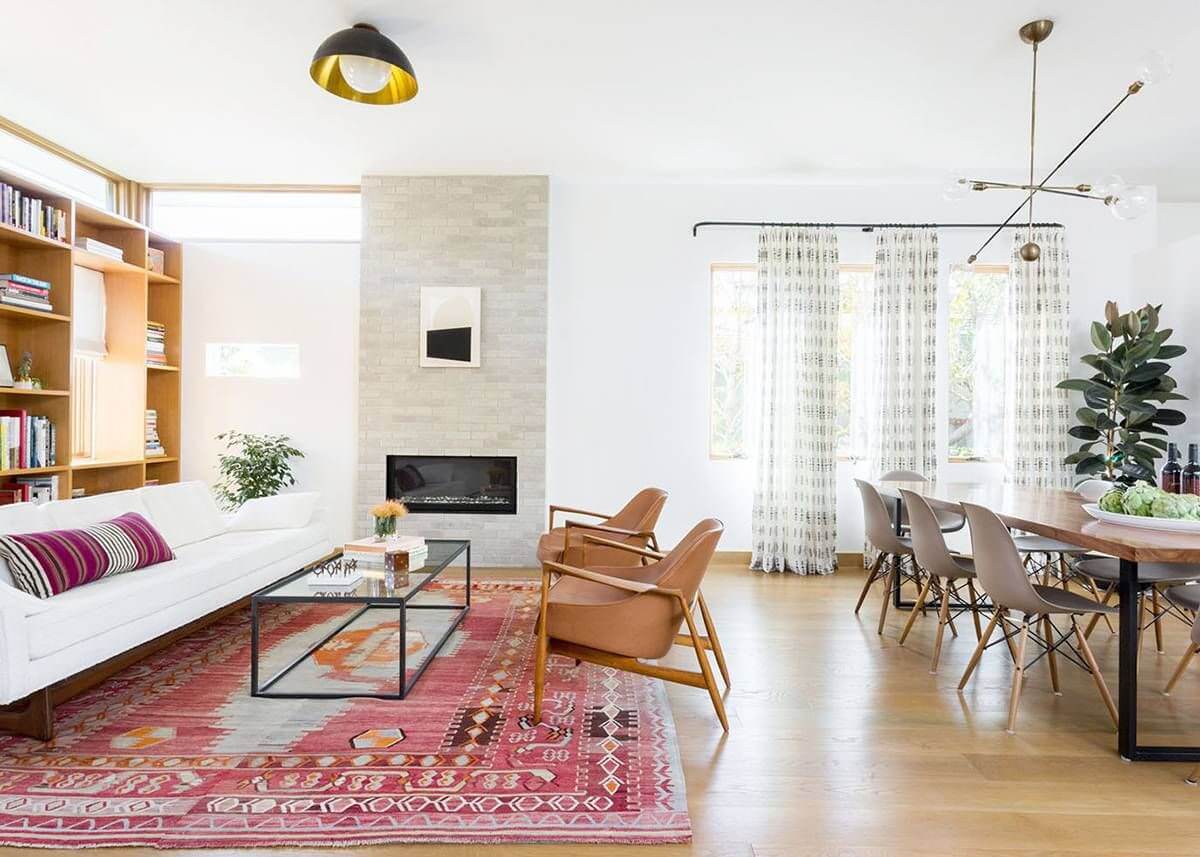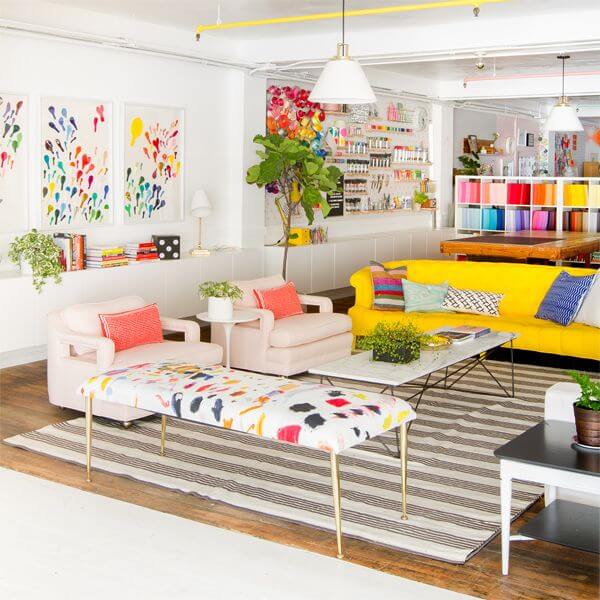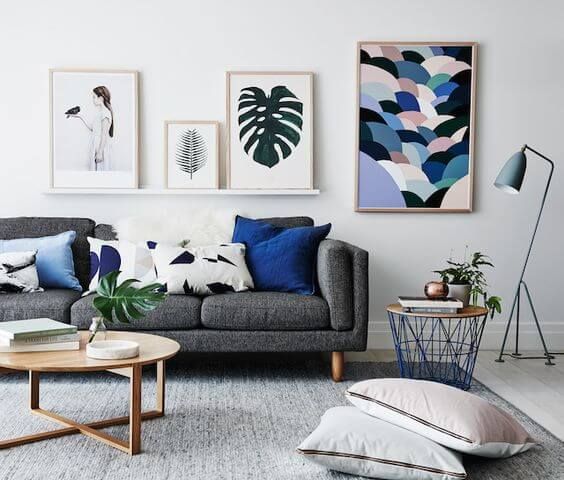What if your hallway is equal to half the living room? Take down the wall or leave it? We will consider this issue from all sides and give comprehensive advice on finding a solution. If the theater begins with a hanger, and not at all from the stage, then the house, of course, from the hallway, and not from the living room. Let’s be honest, the entrance hall is by no means the main place in the house, but, undoubtedly, one of the most visited it, and the organization of space must be thought out no less carefully.
Here we kiss each other goodbye and meet each other in the evening after a difficult day, start a tour of the home for guests and store essentials, whether it be an umbrella or keys. Adjacent to the front door, the hallway serves as a buffer zone between the public space and the private area, the “starting point” to the rest of the house and is usually separated by a wall or doors.
This is a classic layout option, but time is running out, and now small-sized homeowners, guided not only by an aesthetic, but also by a practical approach to interior design, are increasingly resorting to combining several spaces into one.
Eliminating, for example, the partition between the front corridor and the living room, we get a space that is visually enlarged several times, but no longer has a clear distinction. Any “operative” intervention and redevelopment does not pass without a trace, they have their advantages and disadvantages. Having heard the professional recommendations of architects Natalya Guseva and Inga Azhgirey, we have collected 10 tips on how making the process of “merging” two squares so that you don’t have to build walls again.
1. Furniture


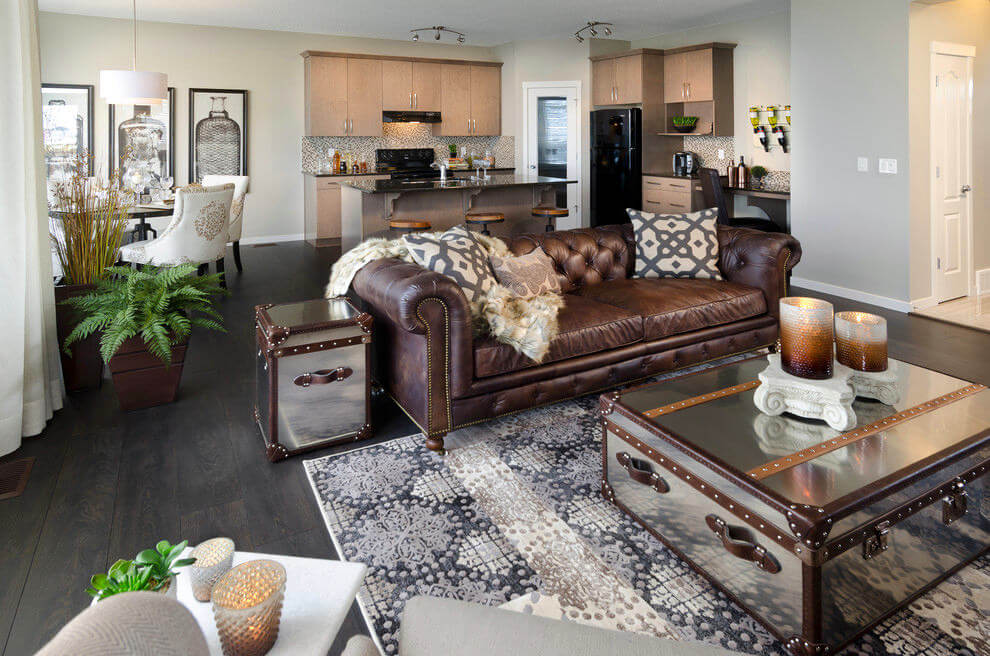
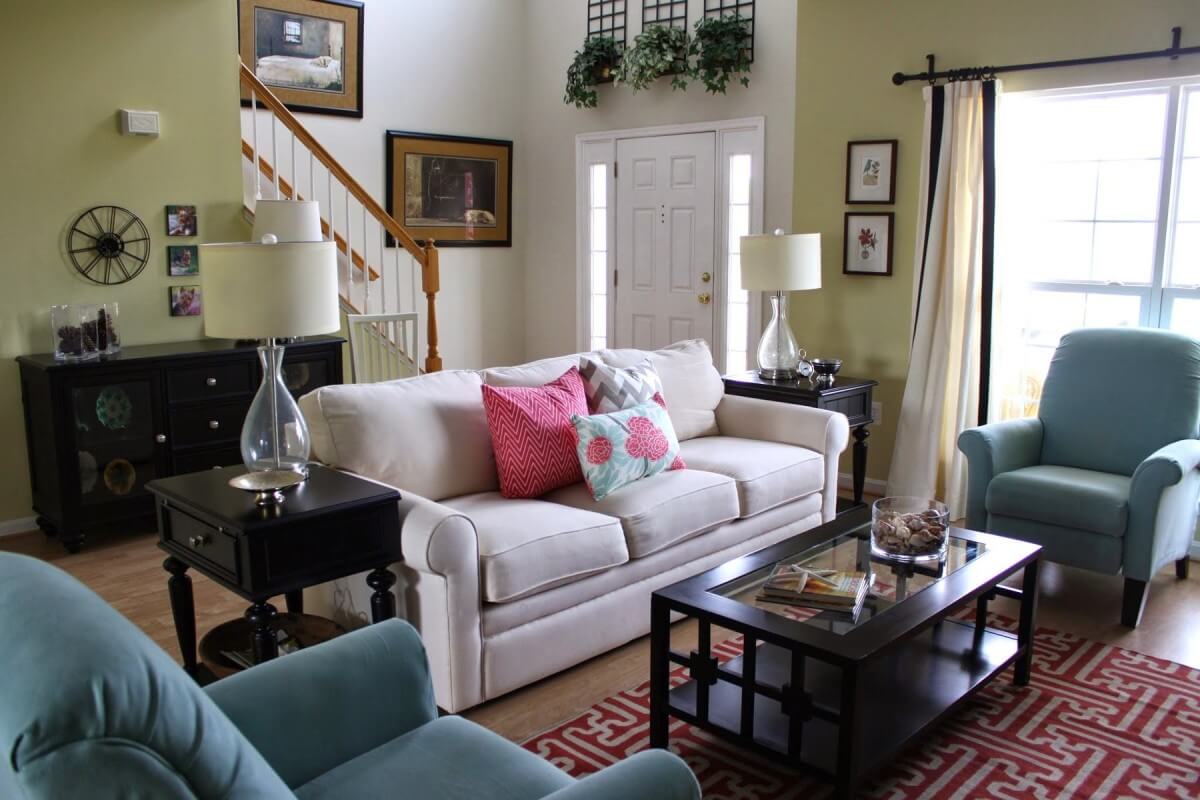
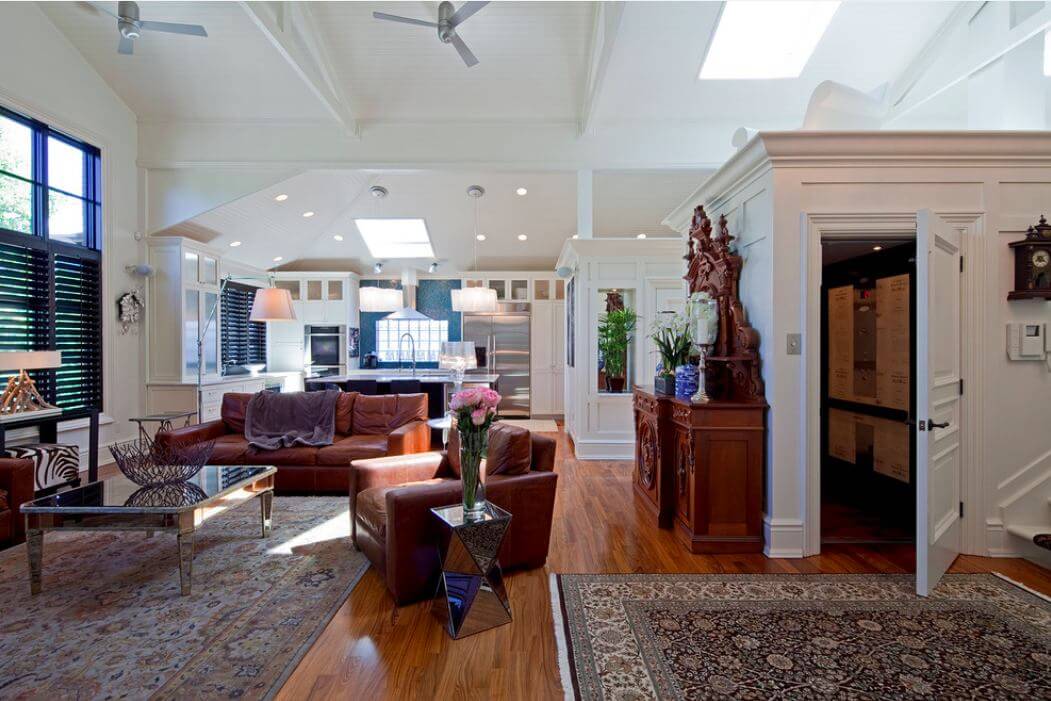
After the complete dismantling of walls, doorways and all sorts of obstacles on the way to the living room, each of the combined zones must still fulfill its direct function.
Having decided that now the room has become larger, you do not need to fit a maximum of pieces of furniture into the main room of the house, crossing the conditional boundaries from the hallway. Incorrect arrangement of furniture can play a trick on you when you stumble on the sofa from the threshold or walk in street shoes to the other end of the living room for the keys.
Everything should be in its place. Leave a vertical or wall hanger in the hallway, replace a bulky chest of drawers with a built-in storage system.
Often in small studio apartments you want to save on hallway space, limiting yourself to just one built-in wardrobe for outerwear, which can be beautifully located somewhere in the corner. If it matches the color and the style of the furniture in the living room, it will harmoniously fit into the common space.
To begin with, you should generally understand why you need to combine the hallway and living room. Do you want to be in the living room and see who comes or goes? Do you need full or partial integration? If you still combine, then you should immediately decide what partitions will be, think about their functionality. You can divide the premises with a full-height cabinet with mezzanines (small depth, but with a solid amount of storage).
It will become a link between the two rooms. The depth of the cabinet can be used on both sides of the hallway and living room. You can delimit the premises with a low (1.5 m) rack or chest of drawers, this will provide additional storage opportunities.
2. Wall color

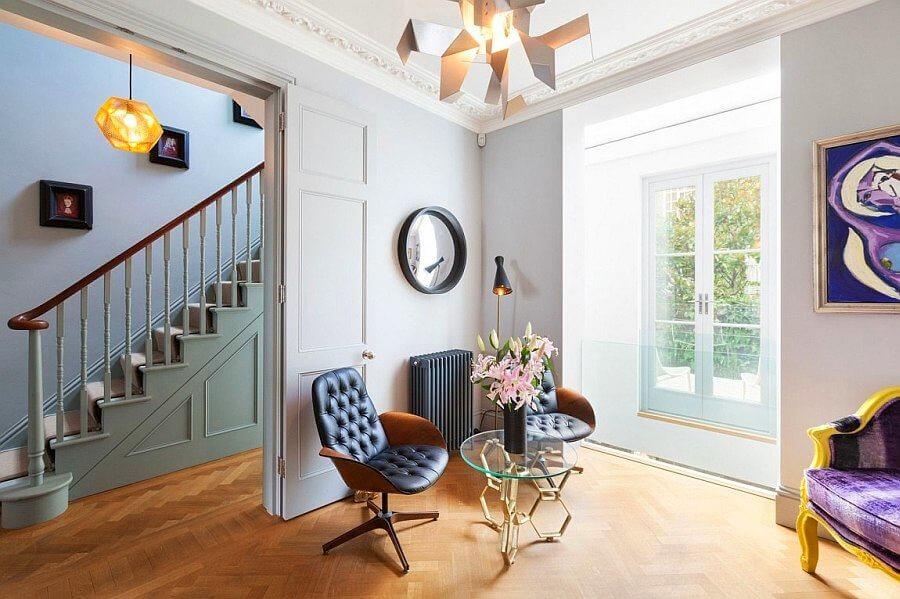
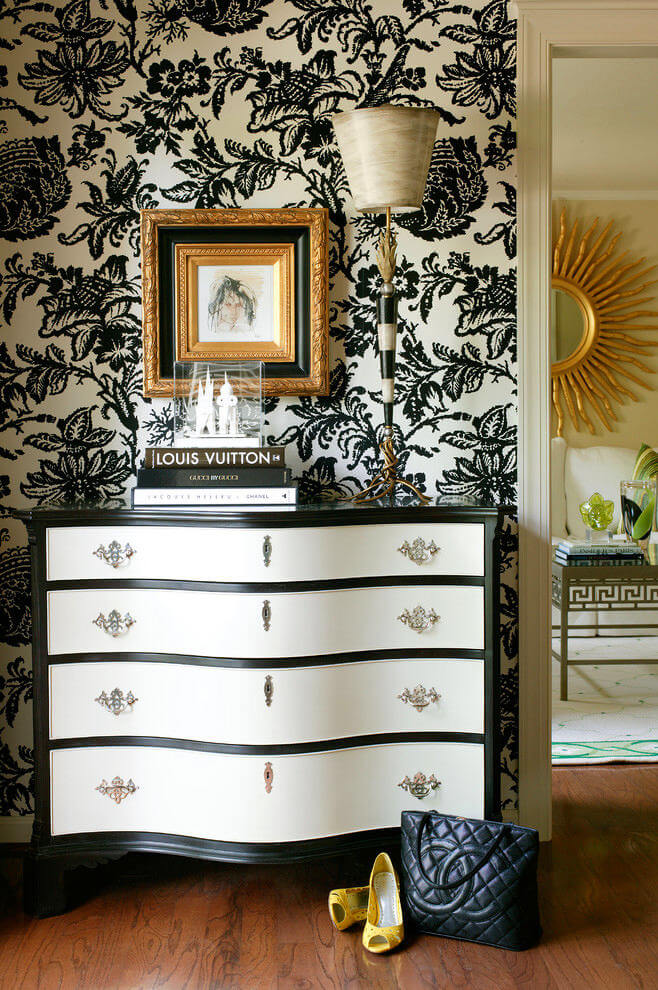
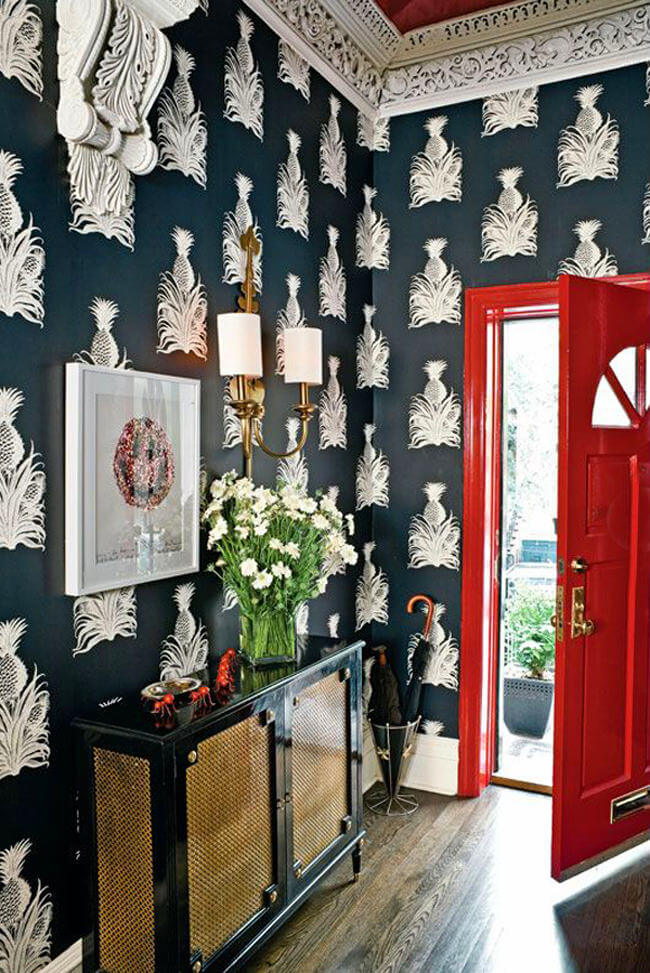
By unifying spaces, you don’t have to use one solid wall color in the room. The absence of a color transition from one zone to another, paradoxically, can visually reduce the area of the rooms – in this case there will be either one large entrance hall or a medium-sized living room.
Use similar hues to blend the front corridor into the room, avoiding too much contrast, whether it’s textured plaster, a wallpaper pattern, or a difference in hue.
With the combined premises, I would not recommend making too sharp color transitions of the zones, otherwise there will be a feeling of a small, suddenly “pasted” hallway. It can be the same wall color as in the living room, or close, but with a different texture, or, conversely, smooth. I am for the unity of style.
3. Decor

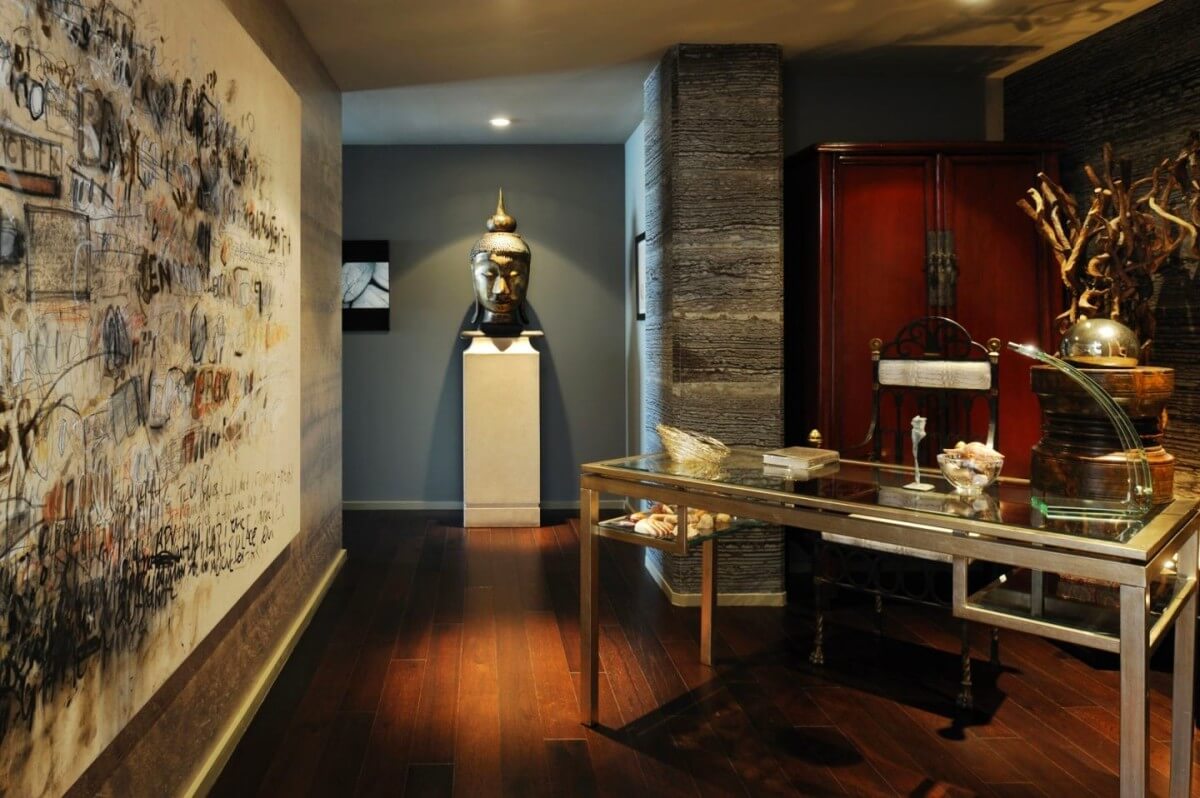

In the case of a “merging” of such spaces as an entrance hall and a living room, the use of decor has a dual function: decoration of the room and zoning. A half-meter vase or floor sculpture, a series of photographs or pictures on the wall will be an excellent, discreet way to distinguish between the entrance to the home and the recreation area.
It will be enough to add one interesting, unusual element to the design of the hallway to designate the room, give it individuality and independence, but at the same time doesn’t separate (in style) from other rooms. It can be a mirror in a bold, unusual frame or a bright upholstery of a puff.
In general, the entrance hall is the place that we see when we enter home after a busy day, and where our journey from home begins. Bring in what makes you happy. Maybe it will be a key holder with a photo of your family, decorative “happy” baubles from your child on the mirror, or maybe it will be a painted decorative frieze on the wall, made by recently moved newlyweds.
4. Lighting
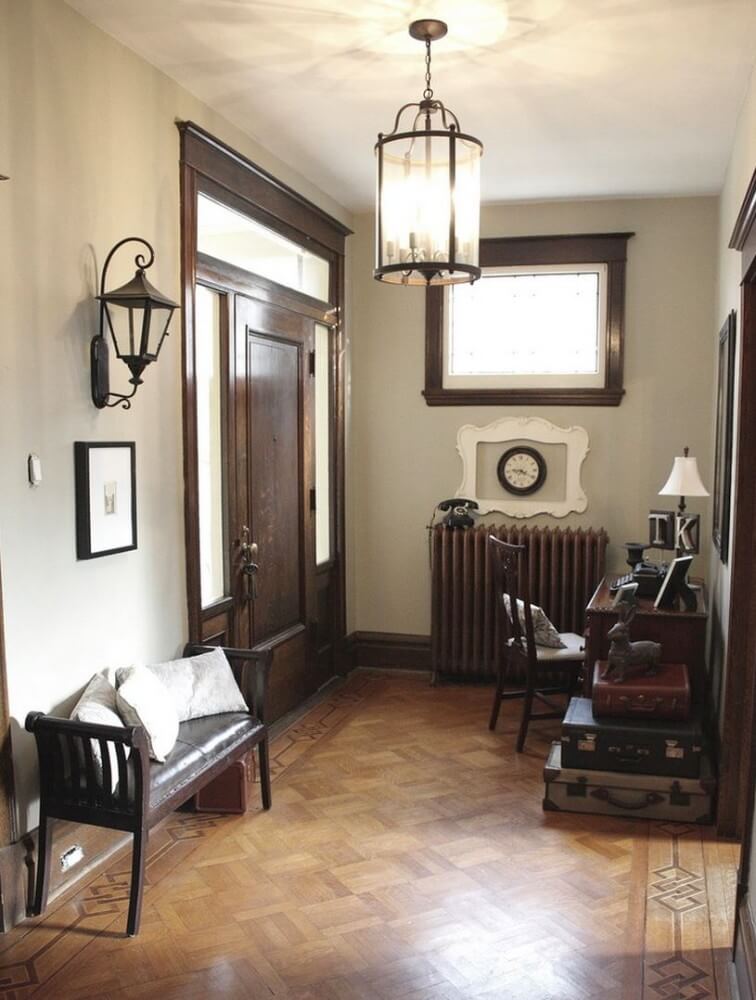
Skillfully exposed light can not only give coziness and spaciousness to housing – different lighting devices are widely used for zoning individual functional parts within one room, not to mention the space combined from several rooms.
The central lighting of the living room and a number of auxiliary lamps, sconces, various kinds of lights can successfully contrast with spotlights or ceiling lamps suspended on long mounts in the hallway. The position and direction of the light flow will do their job, visually separating one zone from another.
5. Floors

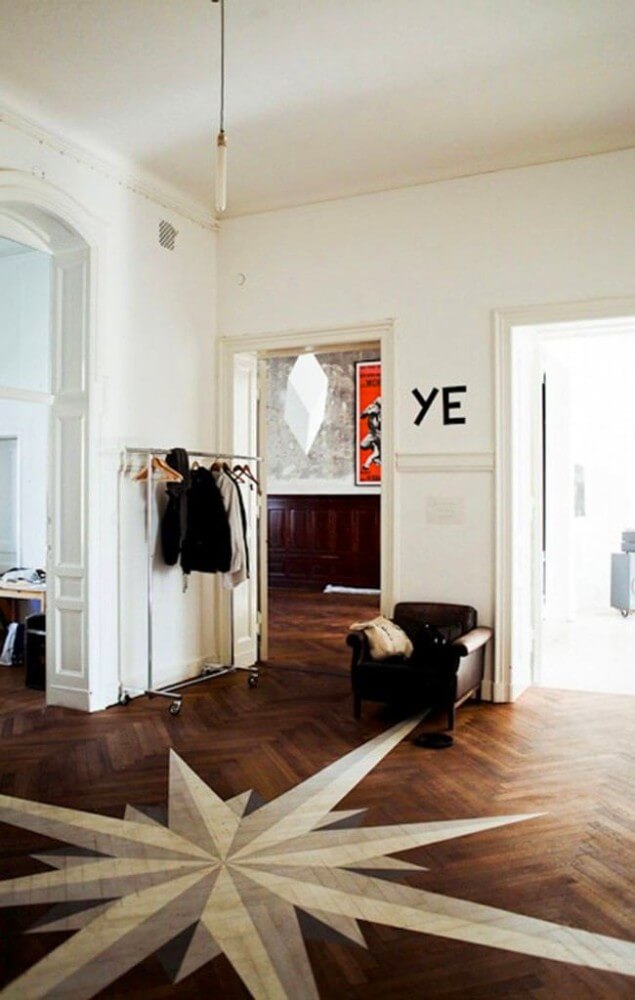
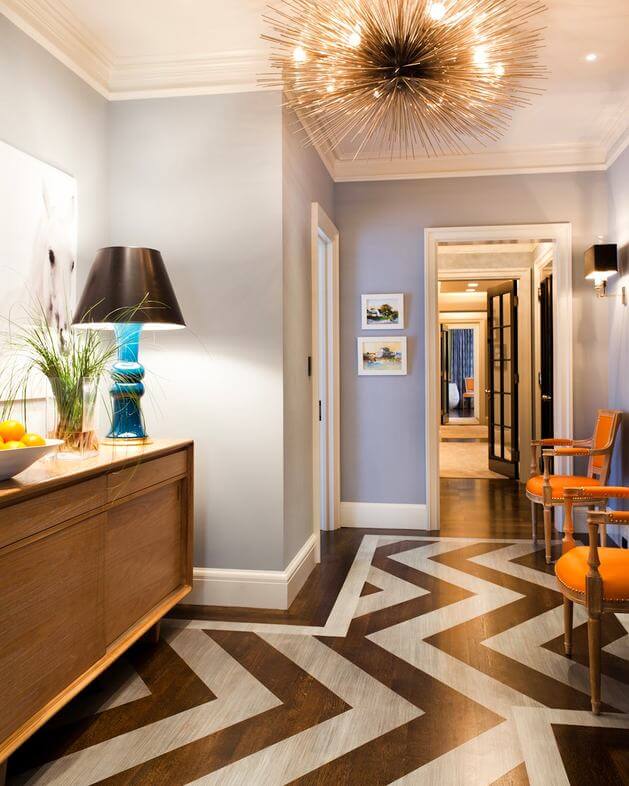
Most often, crossing the threshold of housing, we first look at our feet, intuitively convinced of the safety, and then look around the rest of the room. It is the use of contrasting colors and materials for the floor that is perhaps the easiest and most direct way to clearly delimit the area for changing street shoes to a home version.
In view of our urban realities and the not entirely satisfactory sanitary condition of the streets, it is not customary for us to walk in shoes at home – the entrance hall acts as a kind of filter.
It serves as an “apartment” continuation of the street with all the consequences that follow in the form of dirt, moisture and dust, so the use of a more durable and easy-to-clean flooring should definitely be used in this area.
A smooth transition to the living room can be made due to a smoother and less textured material: laminated or cork, natural wood, lacquered parquet.
One of the problems of combining the hallway to the living room is the dirt from the street (especially in inclement weather), which will also enter the living room and create a sloppy look. To prevent this from happening, you need to zone directly the “patch” where you will, take off your shoes and outerwear with materials that are easy to clean: tiles, natural stone or mosaics.
Such a zoning solution can also be supported on the walls, finishing them in this place with easy-to-clean materials in the style of the living room interior.
As for the floor, a slight “hooliganism” is quite appropriate here – porcelain stoneware of an unusual texture, color, interesting layout is just as appropriate as a coating that is close in color or texture to the main floor covering. But an unusual floor in a small area is more interesting! True, we must not forget – if you want to make a green floor, let a green scarf or green hanging mini-lamps hang on a hanger.
6. Ceiling


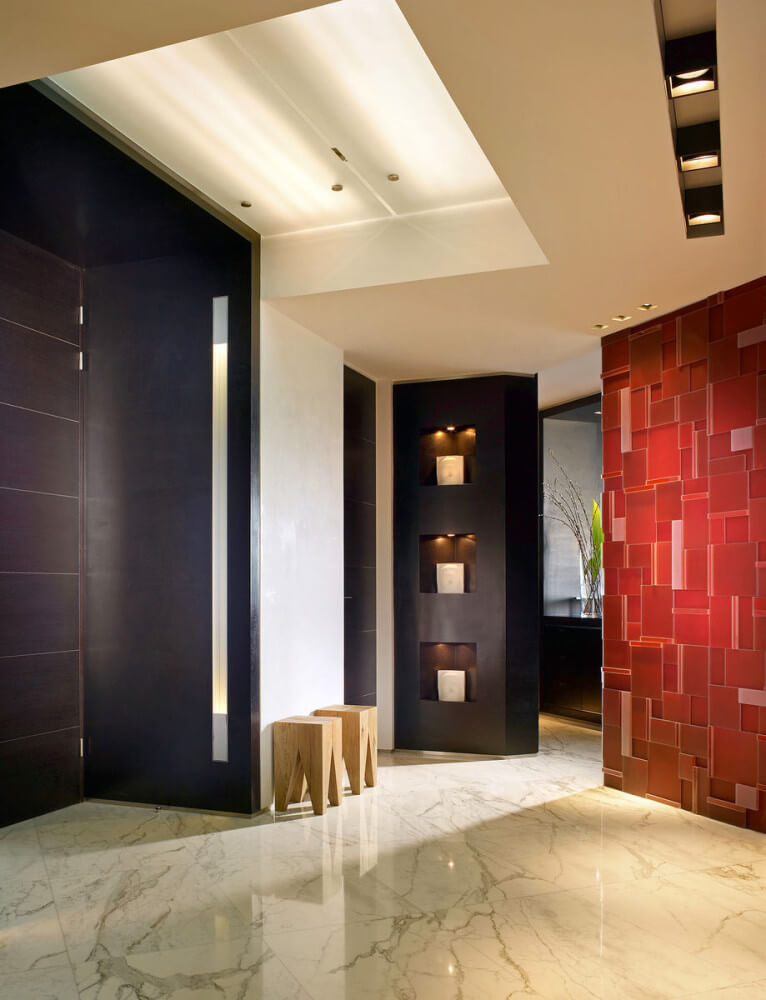
Along with the approach to the use of different materials for the floor, we must not forget what is above our heads: the ceiling. A slight change in the level of the ceiling in the hallway and living room visually zones the space without clutter.
This approach in delimiting functional areas is clearly visible both from the threshold and directly from the room. Another option is the use of popular “roof” design technologies: stretches and suspended ceilings, decorative beams, textured surface coating.
7. Partitions

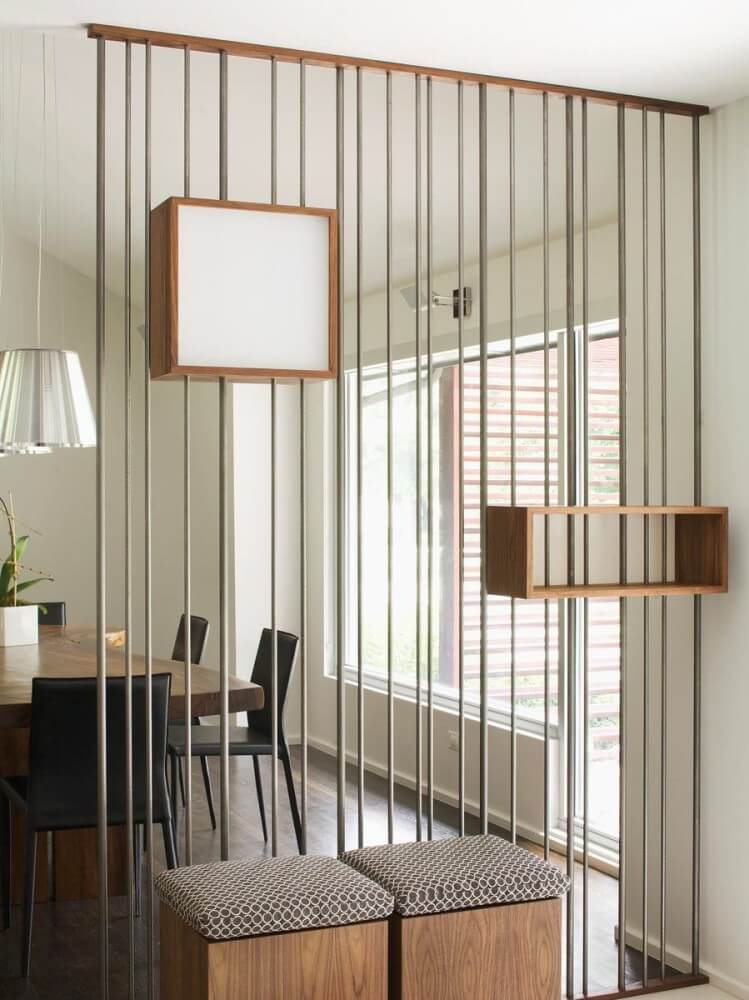
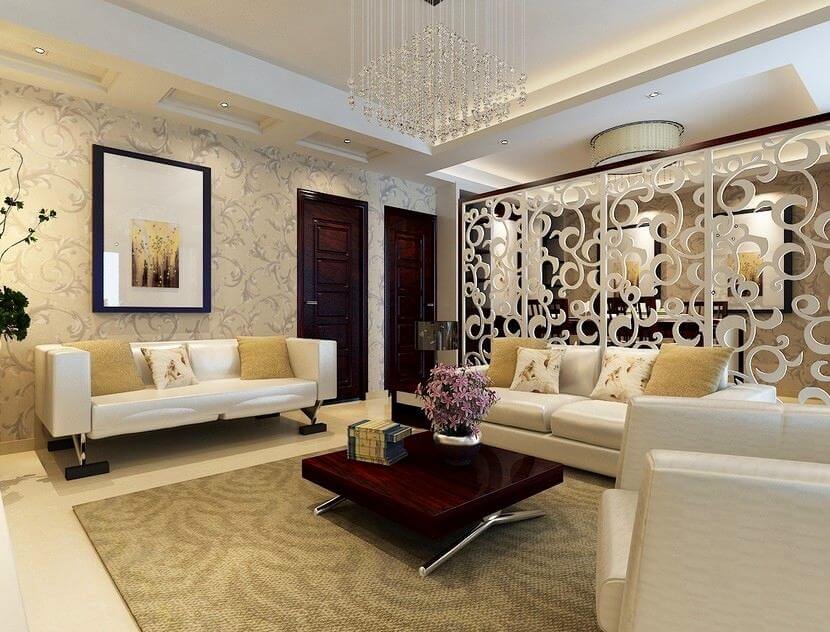
Speaking of partitions, we do not mean newly erect brick walls or thresholds, but sliding or decorative structures that conditionally create a “presence effect”, but do not prevent the penetration of light and do not eat up the volume.
There are many ready-made options for such interior “delimiters” that can easily be optimized for a specific space.
But by turning on the fantasy, you can do without the additional manufacture and installation of these structures. A beautiful wooden screen that slightly covers part of the entrance to the living room, a curtain, and even such light elements as lamps on a long wire can be an excellent option for a conditional partition.
8. Corners, supports, passages

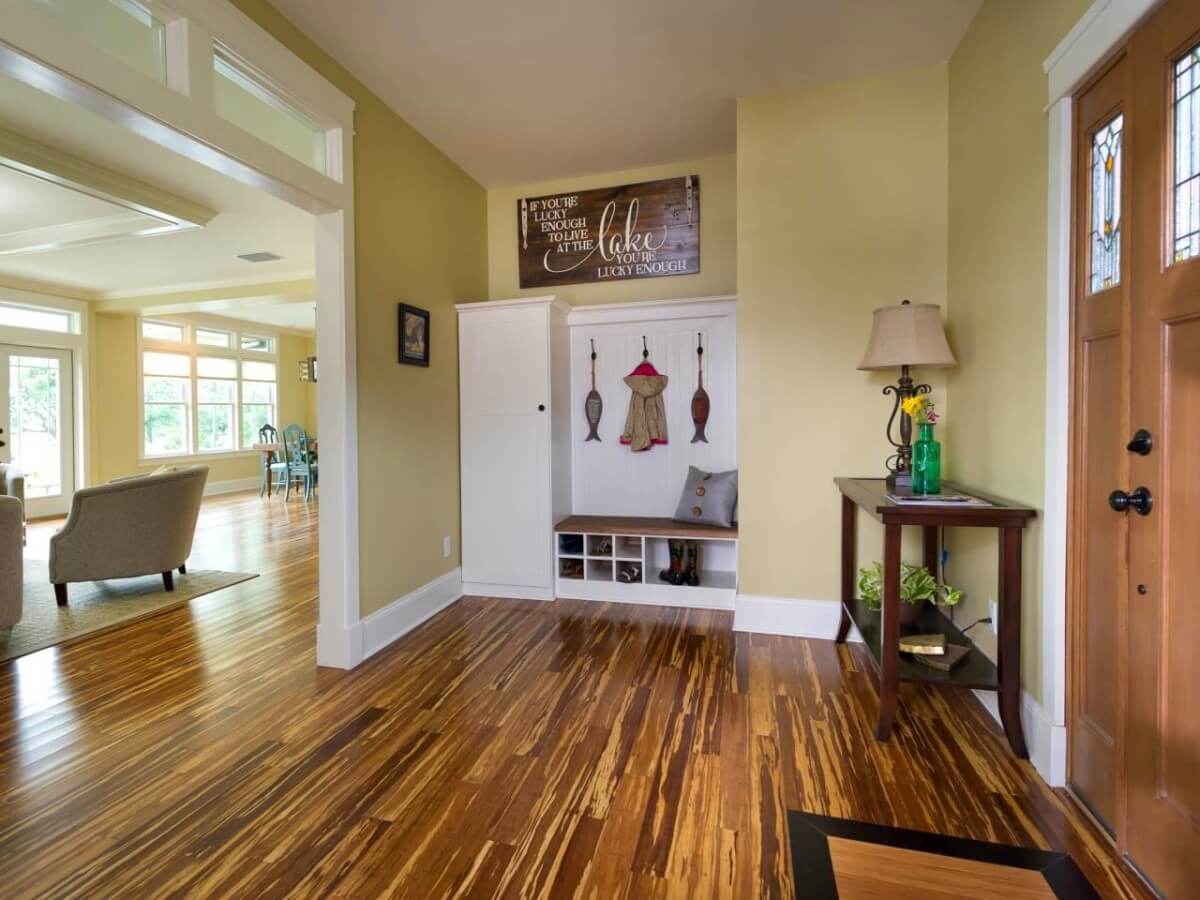
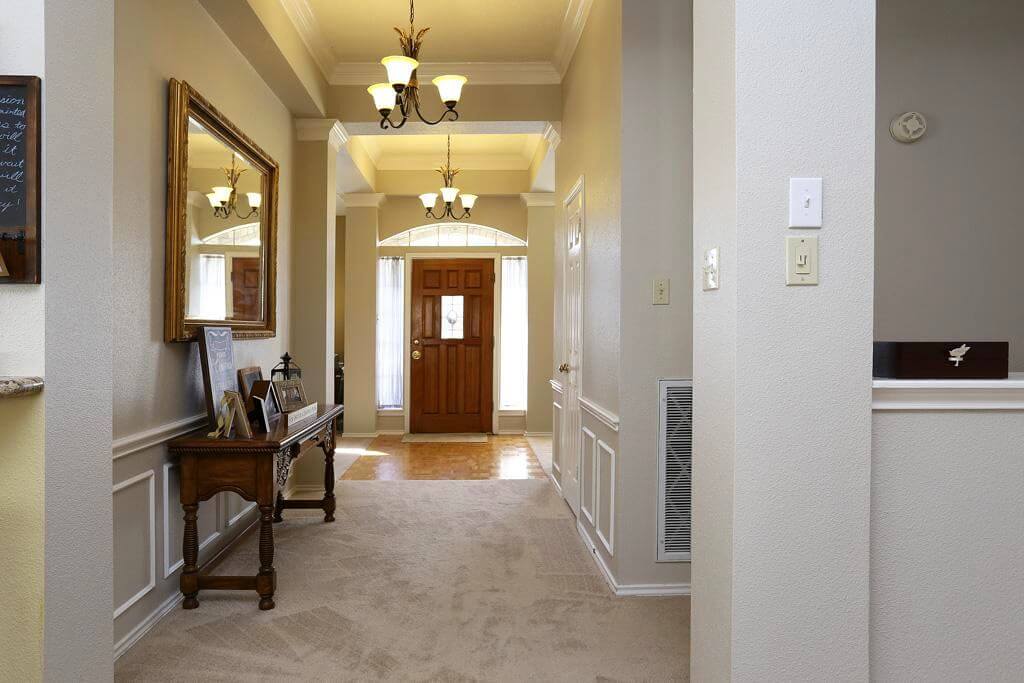
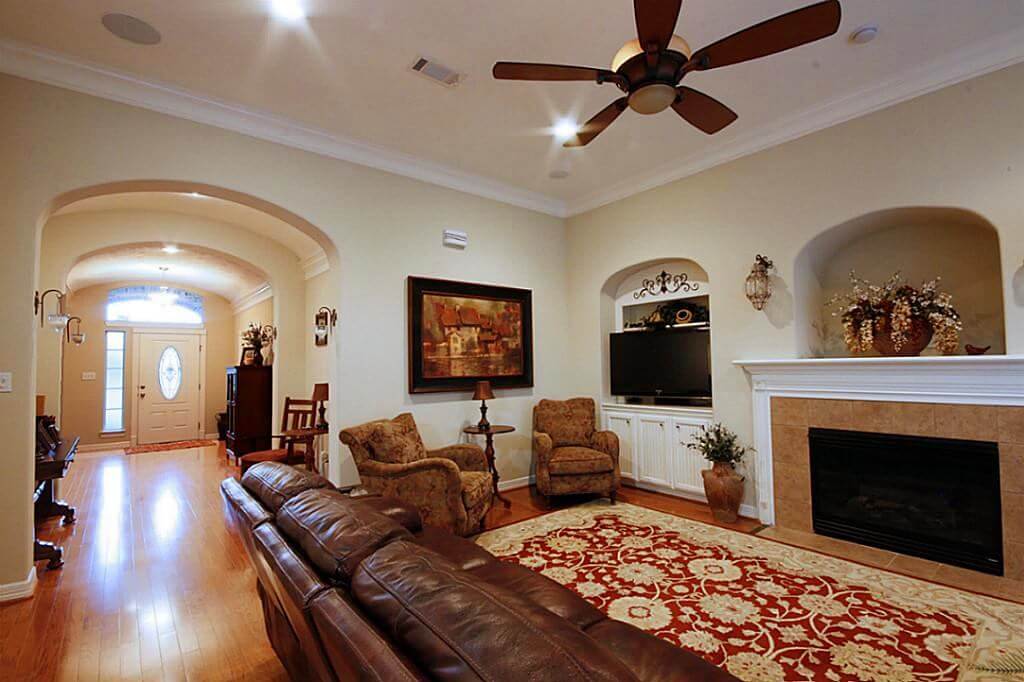
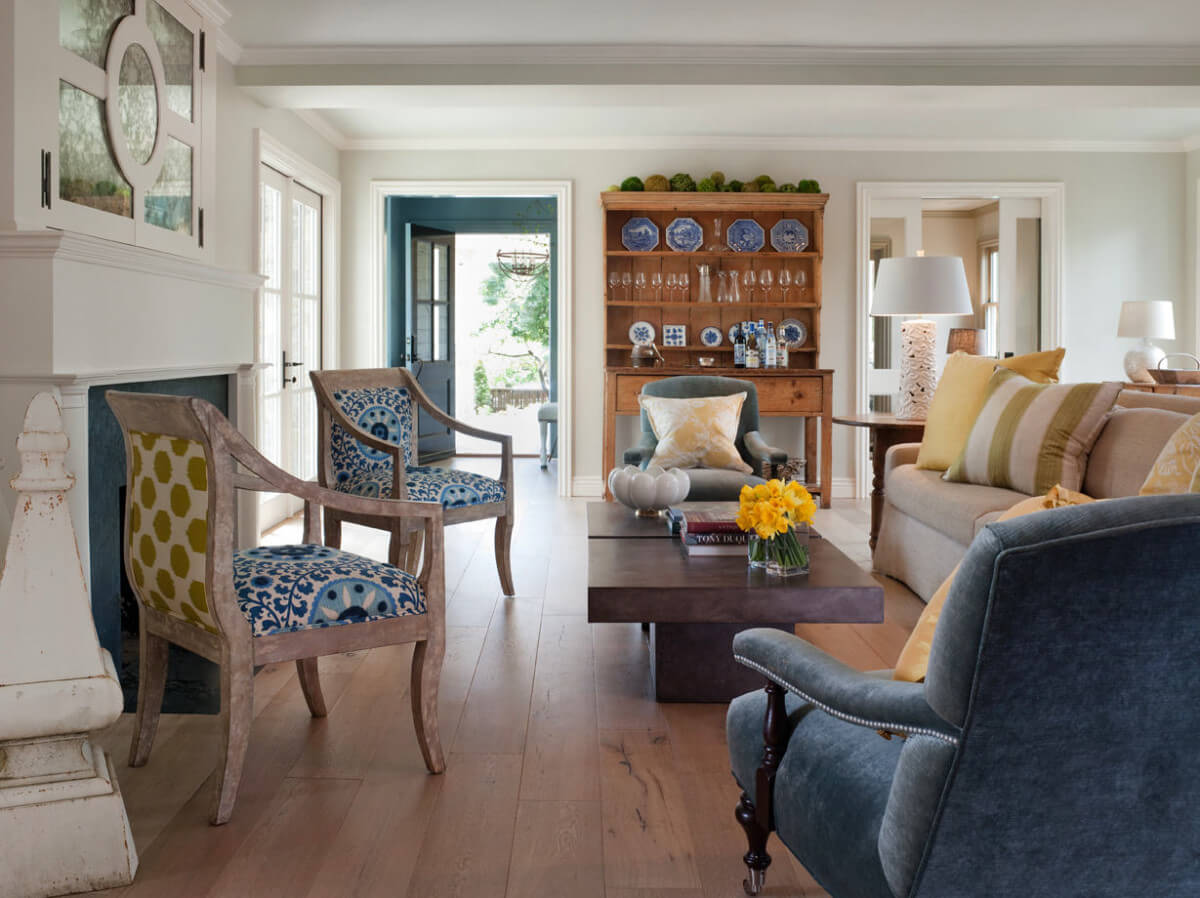
Nobody forces you to “burn bridges”, leaving no hint that there was once a separate passage or wall between the hallway and the room.
When dismantling the wall separating the rooms, leave a part in the form of a small support that can serve as a functional surface for a storage system or a mirror: on the one hand, nothing prevents free movement, on the other, the entrance hall is formally separated from the living room.
Same story with aisles and corners. If the layout of your home has angular shapes, make one of the corners that leads to the living room more expressive by pushing it forward a few tens of centimeters.
9. Built-in storage

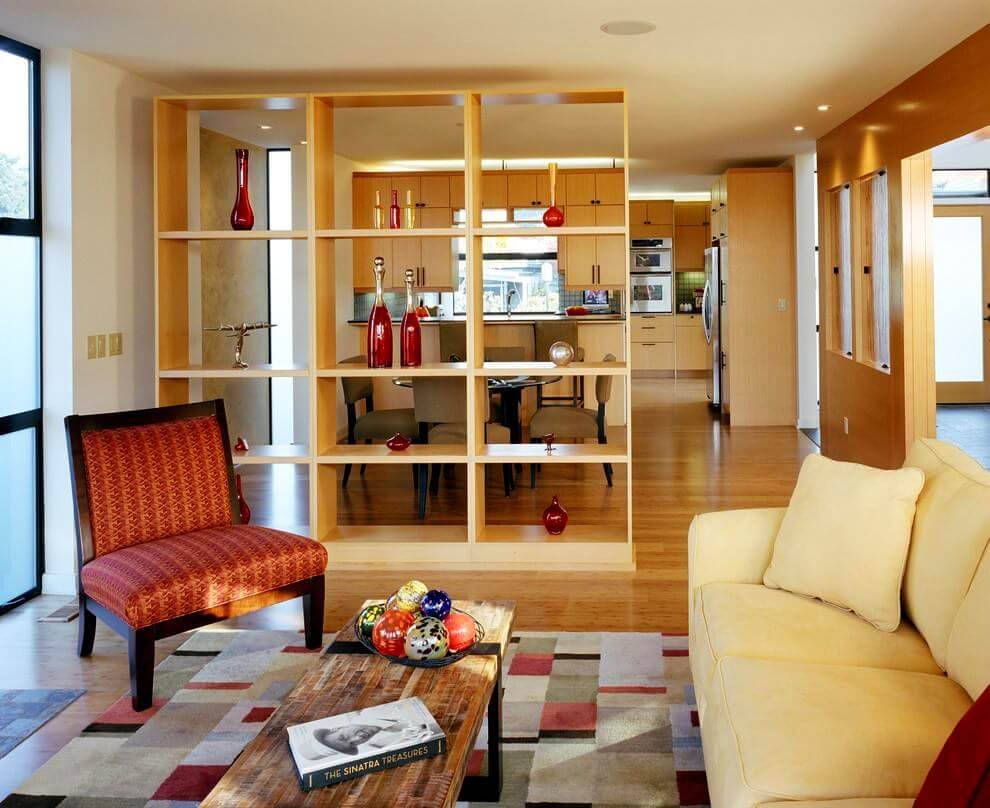
Designers and architects say: use space wisely. Well, use – so use. In this case, proven storage systems in the form through racks and floor structures are used.
By placing the rack near the wall or, on the contrary, by setting it as a visual center at the border between rooms, you automatically acquire additional space for storing small essentials within reach when leaving the house.
In combination, such a rack or cabinet plays the role of a quite convincing interior partition, saving you from bulky pieces of furniture in the hallway.
The main problem of many apartments is in very small hallways. Here you need an individual approach, and you also need to take into account the interests and needs of the family. Without which element of storage or use do you not imagine a hallway?
You don’t need to try to cram everything into a small room, it’s better to make the main, but the storage place you need (it can be a decorative hanger for outerwear or a shoe rack, a puff over a shelf for small things), and store the rest in other places.
10. Front door
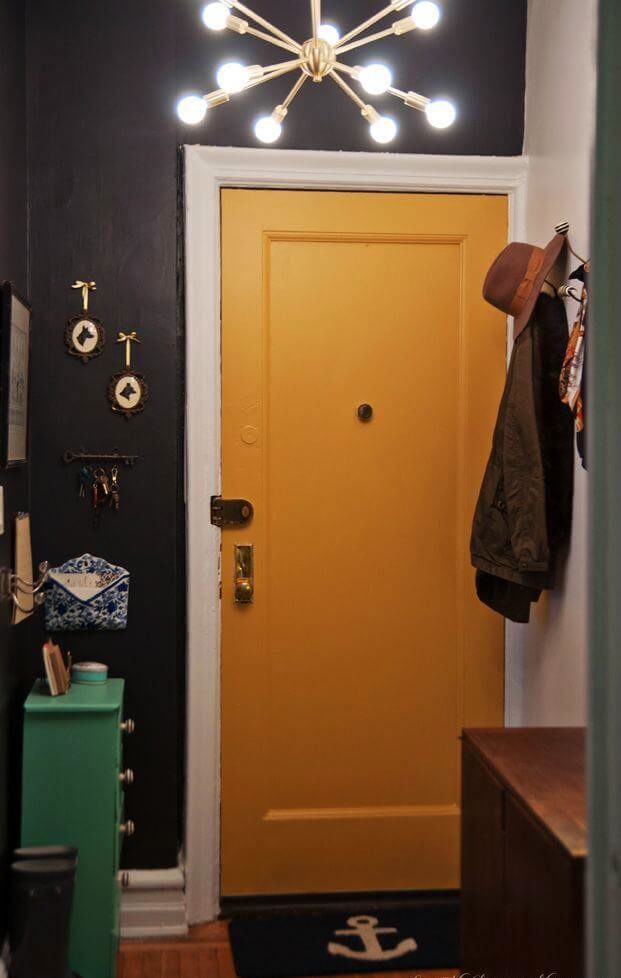
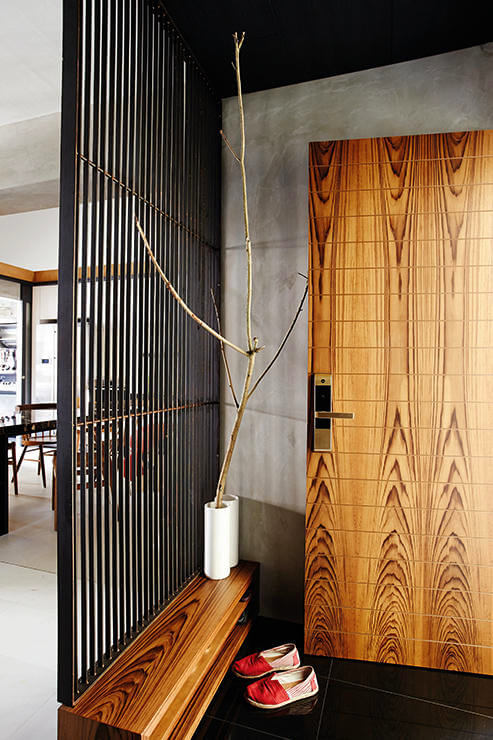
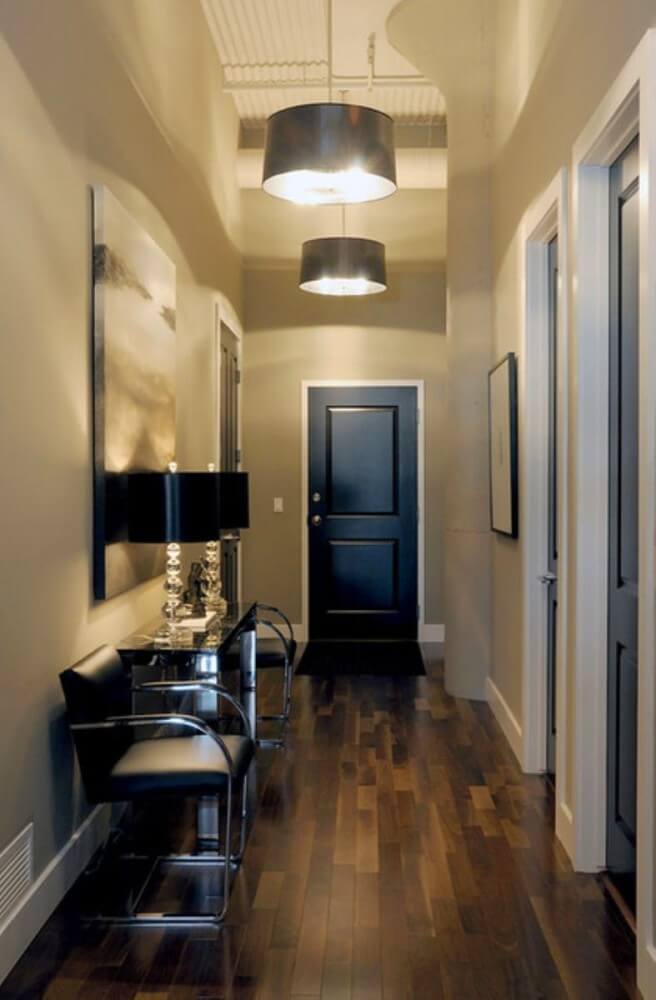
When decorating the interior of a room where the entrance hall is combined with the living room, one should not forget about the design of the front door. It is the front doors that will be the visual point that, in the event of a merger of two spaces, you will see constantly while in the room.
Avoid too bright colors, because sooner or later a catchy element can get boring or, even worse, start to annoy. But at the same time, you should not use colors to match the overall style of the interior, as you risk simply not finding a way out – but seriously, the hallway can visually lose its main distinguishing feature.
